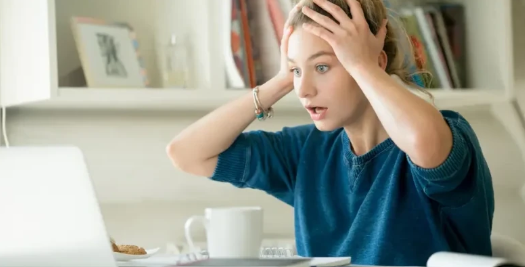Anúncios
Losing precious photos from your memory card can feel like a nightmare. Whether it’s your last vacation, family moments, or professional work, accidentally losing images can leave anyone frustrated and desperate for solutions.
But here’s the good news: in many cases, those photos aren’t gone forever.
In this guide, I’ll show you practical tips, strategies, and tools to help you recover deleted or lost photos from your memory card — quickly and safely.
Recommended Content

Recover your lost photos.
Why Do Photos Disappear from a Memory Card?
Before jumping into solutions, it’s helpful to understand why photos vanish from memory cards. Here are the most common reasons:
- Accidental deletion
- Formatting the card by mistake
- File system corruption
- Virus or malware infection
- Physical damage to the memory card
- Improper ejection from a device
- Memory card errors or bad sectors
The key thing to remember is: even if photos are deleted or lost, they often still exist on the card until overwritten by new data.
Anúncios
That’s why acting fast is essential.
Step 1: Stop Using the Memory Card Immediately
The first rule of photo recovery: stop using the card right now.
Why? Every time you save new data to the card, you risk overwriting the deleted photos, making them much harder (or impossible) to recover.
→ Remove the card from your camera, smartphone, or device.
→ Store it safely to avoid physical damage.
→ Avoid saving new photos or files to it.
Step 2: Use Trusted Photo Recovery Software
Photo recovery software is one of the most effective ways to retrieve lost images.
These tools scan your memory card deeply, looking for deleted files that still exist but are invisible to the device.
Here are some of the best photo recovery tools available:
| Tool | Platform | Key Features |
|---|---|---|
| Recuva | Windows | Free & easy to use |
| Disk Drill | Windows & Mac | Recovers multiple file types |
| PhotoRec | Windows, Mac, Linux | Open-source, supports many formats |
| EaseUS Data Recovery | Windows & Mac | User-friendly with preview options |
| Stellar Photo Recovery | Windows & Mac | Specializes in photo & video recovery |
“Here’s an app that can help.”
App

Dr.Fone
Step 3: How to Recover Photos Using Recovery Software
Example: Recovering Photos with Recuva (Windows)
- Download and install Recuva from the official website.
- Insert the memory card into your computer (using a card reader).
- Open Recuva and select “Pictures” as the file type.
- Select your memory card as the location to scan.
- Let the software scan for deleted files.
- Review the recoverable photos and save them to a different drive (never the same memory card).
Pro Tip: Always save recovered files to another location to avoid overwriting remaining data.
Step 4: What If the Memory Card Is Corrupted?
Sometimes, the card won’t even show up on your computer. In that case:
- Try another card reader.
- Insert the card into another device.
- Use the built-in “Check Disk” tool in Windows:
→ Right-click the memory card drive > Properties > Tools > Check. - On Mac, use Disk Utility > First Aid.
If the card is still inaccessible, you might need professional recovery services.
Step 5: Recover Photos from Backup (If Available)
Ask yourself: Do I have a backup?
Many smartphones and cameras automatically sync photos to cloud services like:
- Google Photos
- iCloud
- Dropbox
- OneDrive
Check those platforms for your missing images.
Pro Tip: Always keep automatic backup features enabled on your devices to avoid future panic moments.
Step 6: Use Command Prompt (Advanced Option)
For Windows users, here’s a trick to recover photos using Command Prompt:
- Insert the memory card.
- Open Command Prompt (search “cmd”).
- Type:
bash
CopiarEditar
chkdsk X: /f
(Replace X with your memory card drive letter)
- Then type:
bash
CopiarEditar
attrib -h -r -s /s /d X:\*.*
This can sometimes restore hidden or corrupted files.
Extra Tip: Repair Damaged or Corrupted Photos
Sometimes you recover photos, but they’re broken or won’t open.
Tools that can help repair damaged images:
- Stellar Repair for Photo
- PixRecovery
- JPEG Repair Toolkit
These tools attempt to fix structural errors in image files, especially in JPEG format.
Step 7: Seek Professional Help for Physical Damage
If your card has physical damage (cracked, bent, or broken connectors), do not try DIY recovery.
Look for specialized data recovery services. Yes, they can be expensive, but if the photos are priceless, it might be worth it.
Search online for:
- Data recovery labs
- Memory card recovery experts in your area
- Certified repair centers
How to Prevent Photo Loss in the Future
Recovering photos is possible — but preventing loss is always better.
Here are 7 essential tips to protect your images:
1. Backup Regularly
Always back up your photos to multiple locations: cloud, external drives, and your computer.
2. Use Reliable Memory Cards
Invest in cards from trusted brands like SanDisk, Kingston, or Samsung.
3. Format Cards Properly
Always format memory cards using your device (not your computer) after transferring data.
4. Avoid Removing Cards Abruptly
Always eject cards safely to avoid corruption.
5. Protect from Physical Damage
Keep memory cards in protective cases and avoid extreme temperatures.
6. Enable Auto-Sync Features
Use cloud services to automatically backup your photos.
7. Don’t Ignore Warning Signs
If your card shows errors or acts unusually, back it up immediately.
Final Thoughts: Act Fast, Stay Calm
Losing photos from your memory card doesn’t mean all is lost. With the right tools, methods, and a little patience, recovery is absolutely possible.
The key steps are simple:
- Stop using the card immediately.
- Use reliable recovery software.
- Explore other recovery methods like backups or repair tools.
- Prevent future losses with smart habits.
And remember: the faster you act, the higher your chances of recovering your precious memories.
Quick Recap Checklist:
- Stop using the memory card
- Try recovery software
- Check cloud backups
- Use Command Prompt (if needed)
- Repair damaged files
- Seek professional help if necessary
- Implement prevention habits
Did this guide help you recover your lost photos?
Leave a comment and share your experience!
And if you found this article useful, don’t forget to share it with a friend — you never know when they might need it.